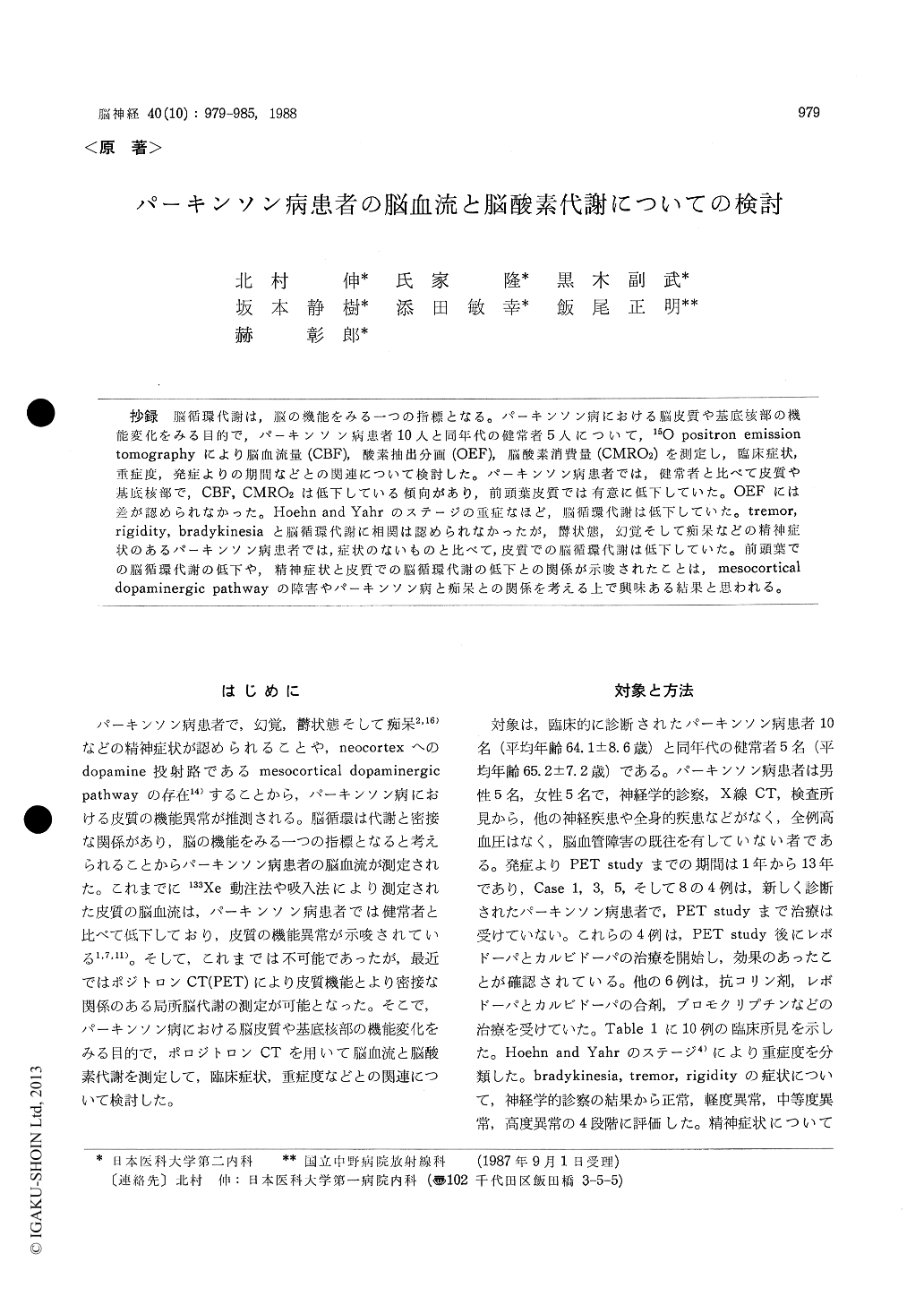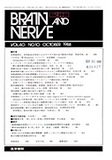Japanese
English
- 有料閲覧
- Abstract 文献概要
- 1ページ目 Look Inside
抄録 脳循環代謝は,脳の機能をみる一つの指標となる。パーキンソン病における脳皮質や基底核部の機能変化をみる目的で,パーキンソン病患者10人と同年代の健常者5人について,15O positron emissiontomographyにより脳血流量(CBF),酸素抽出分画(OEF),脳酸素消費量(CMRO2)を測定し,臨床症状,重症度,発症よりの期間などとの関連について検討した。パーキンソン病患者では,健常者と比べて皮質や基底核部で,CBF,CMRO2は低下している傾向があり,前頭葉皮質では有意に低下していた。OEFには差が認められなかった。Hoehn and Yahrのステージの重症なほど,脳循環代謝は低下していた。tremor,rigidity,bradykinesiaと脳循環代謝に相関は認められなかったが,欝状態,幻覚そして痴呆などの精神症状のあるパーキンソン病患者では,症状のないものと比べて,皮質での脳循環代謝は低下していた。前頭葉での脳循環代謝の低下や,精神症状と皮質での脳循環代謝の低下との関係が示唆されたことは,mesocorticaldopaminergic pathwayの障害やパーキンソン病と痴呆との関係を考える上で興味ある結果と思われる。
The distribution of cerebral blood flow and metabolism is related to neuronal activity. Cere-bral blood flow (CBF), cerebral metabolic rate of oxygen (CMRO2), and oxygen extraction frac-tion (OEF) in ten patients with Parkinson's disease and five age-matched normal control subjects were measured with positron emission tomography (PET) using 15O2, 15O2 steady state inhalational technique to investigate functional changes of the cortex and the basal ganglia in Parkinson's disease.
All patients had no history of cerebrovascular disease and CT scan showed no abnormal find-ings except for moderate cerebral atrophy in only one patient. When the level of clinical dis-ability was related on the scale of Hoehn and Yahr, one patient was stage I , four were stage four were stage X, and one was stage N. Psychic symptoms which include hallucination, depression, and dementia were recognized in four patients. One of these four patients was mildly demented. Four patients were newly diagnosed and had never been treated with antiparkinsonian medication before. Before the patients had their PET study their antiparkinsonian medication wasdiscontinued for more than three days. But in two patients PET study was performed without discontinuity of antiparkinsonian medication.
The values for regional CBF and regional CMR02 were lower in the patients than in the normal control subjects, especially in the frontal cortex there was a significant decrease of CBF and CMRO2. There was no discrepancy between CBF and CMRO2 both in the patients and the normal control. CBF and CMRO2 in the cortex and the basal ganglia were not correlated with the severity of tremor, bradykinesia, and rigidity. But mean cortical values for CBF and CMRO2 decreased in the patients who were graded to stage X and N, compared to the normal control subjects. Mean cortical values for CBF and CMRO2 were lower in the patients who had psychic symptoms than in the patients who had no psychic symptoms.
These results suggest that patients with Parkin-son's disease have cortical hypometabolism which may be related to abnormal neuronal function, especially in frontal cortex. Hypometabolism in the cortex may be partly due to the disturbance of mesocortical dopaminergic pathway and may be related to the development of psychic symptoms in Parkinson's disease.

Copyright © 1988, Igaku-Shoin Ltd. All rights reserved.


